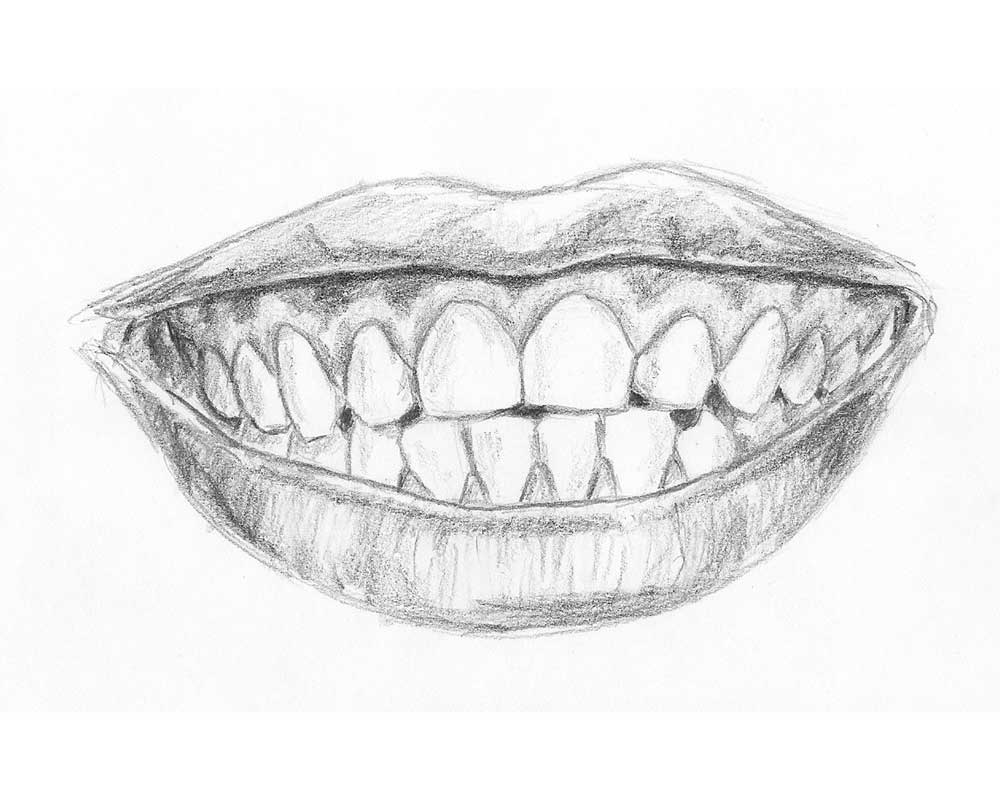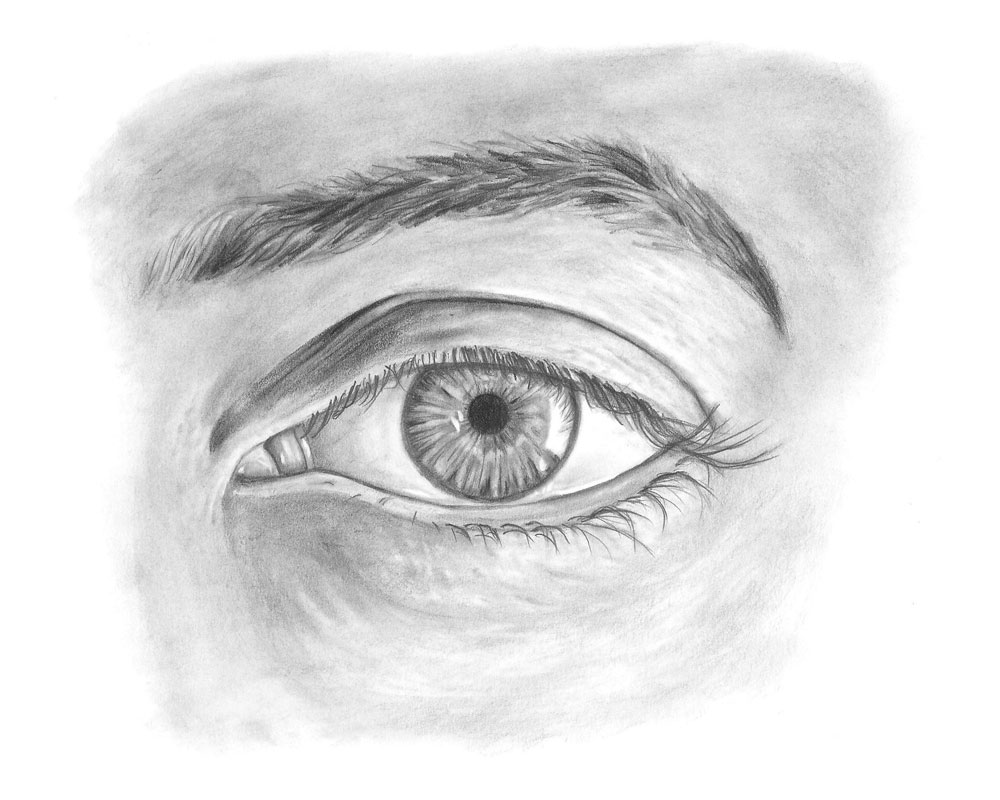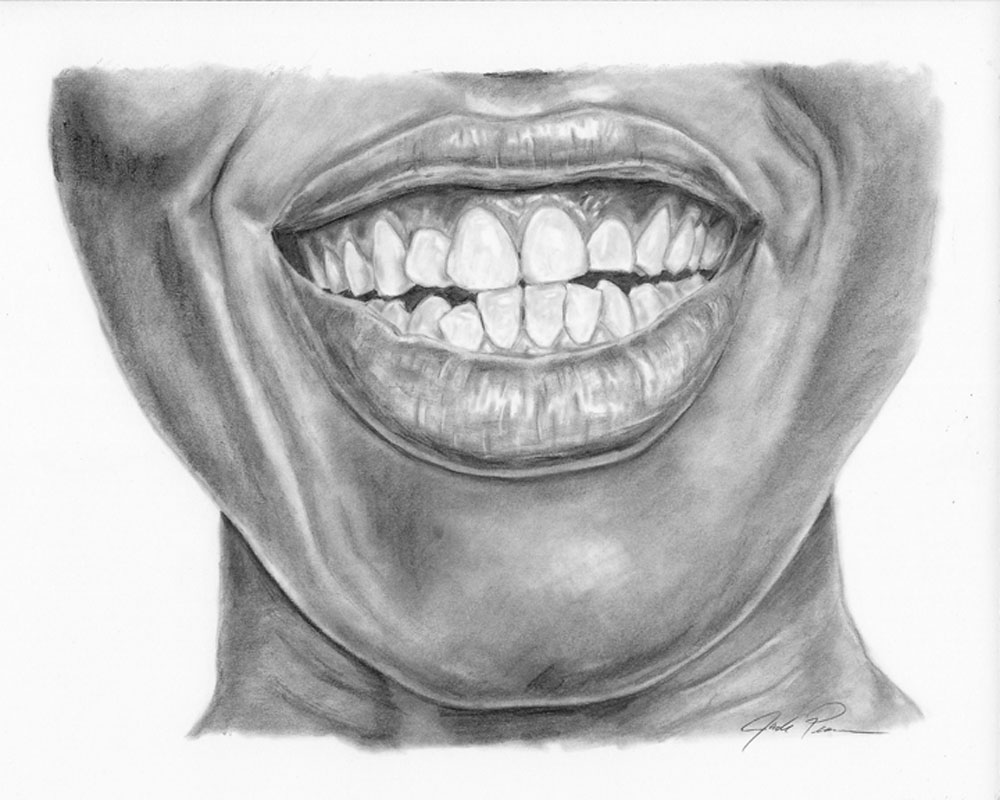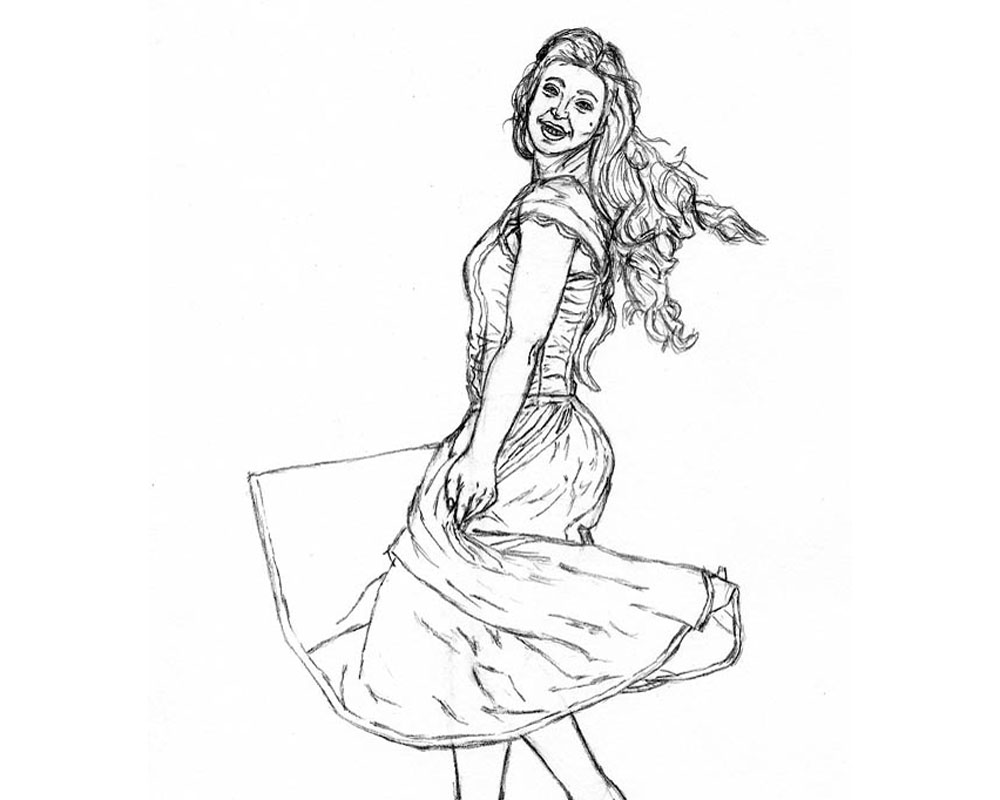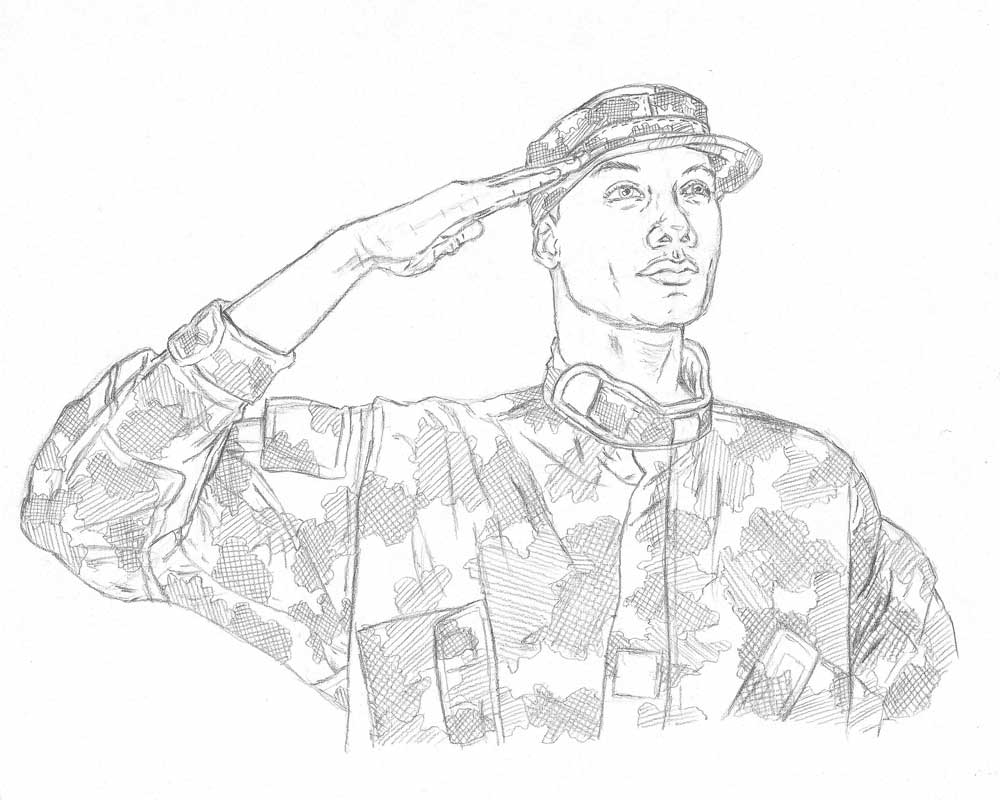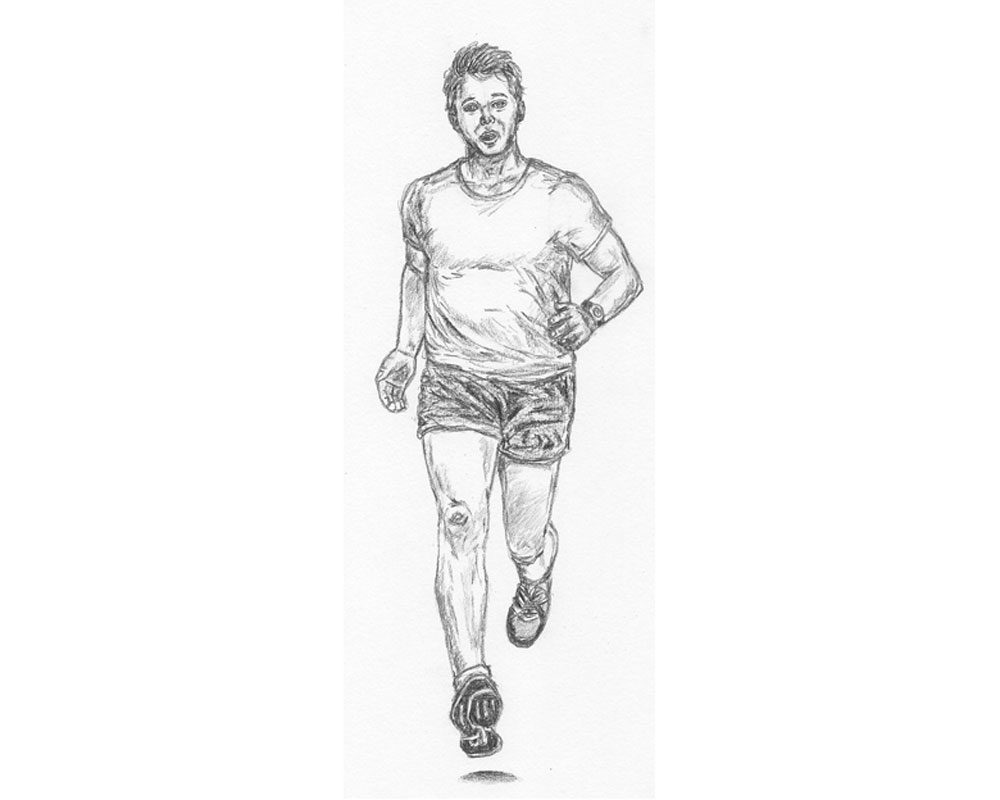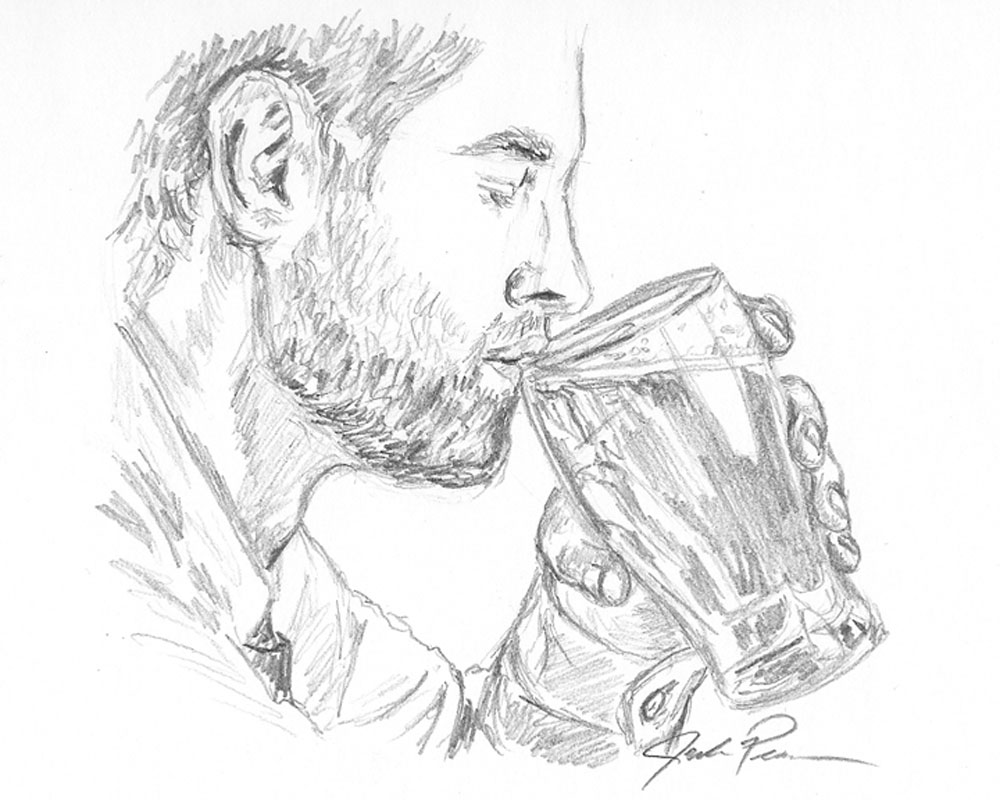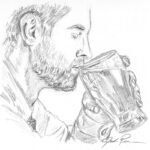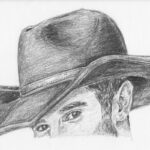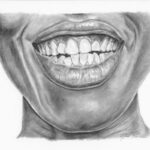Drawing People: Essential Tips for the Beginner Artist
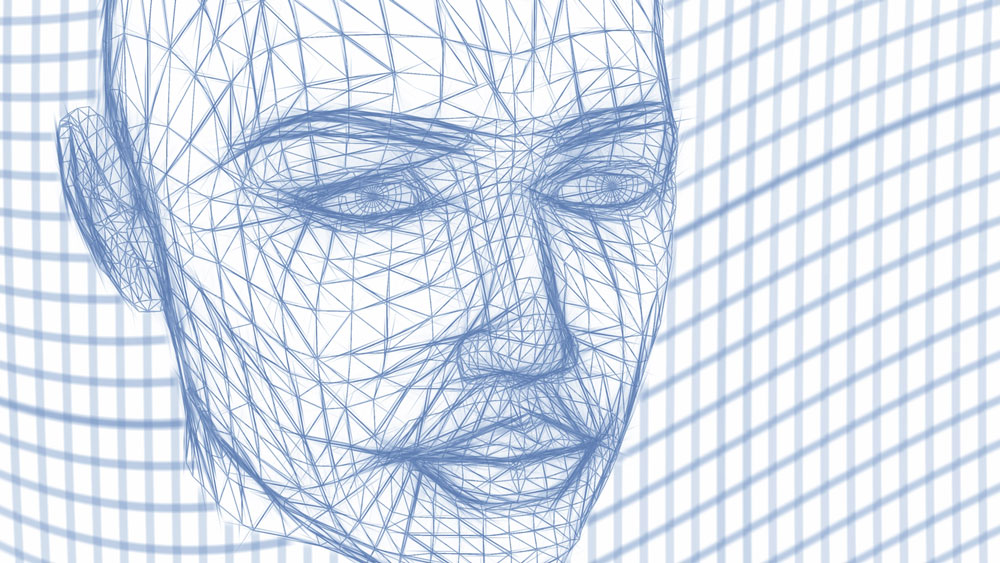
If you consider yourself a beginner when it comes to drawing, the idea of drawing people is likely to be an idea of anxiety and hesitation.
On the other hand, maybe you are a beginner who does not identify with these fears because you are more motivated and eager to learn how to draw people better. Even so, you have likely experienced many occasions of frustration after your attempts to draw people failed to end with a desirable result.
Drawing people easily and effortlessly really comes down to two things:
- You need a little knowledge of some basic fundamentals and,
- Maybe you guessed this already…you need to practice, practice, practice!
Just like with most things in life you want to know how to do, if you are aware of a few essential tips about drawing people and you practice regularly, then drawing people will become easier, will require less effort over time, and will become more enjoyable!
In this post, I’m going to help you become more comfortable with drawing people by explaining some key basics for drawing faces, drawing the body, and drawing people doing things in everyday life. Additionally, I will provide links to related tutorials for supplemental practicing opportunities.
Read on to learn more about how to draw people!
Table of Contents
Basics of Drawing a Face
In order to draw a face, you need to become familiar with basic proportions of the face and head. You should know about differences between drawing males and females. Ultimately, drawing faces successfully comes down to drawing the facial features like the eyes, nose, and mouth in a variety of ways. This variety allows you to create unique and expressive portraits.
Use the Loomis Method for Basic Facial Guidelines
There’s a lot of advice out there on how to properly break down the proportions of the face. I recommend the Loomis method (from Andrew Loomis, author of the book Drawing the Head and Hands) because it’s standard and simple to follow.
The Loomis method involves thinking of the head as a three-dimensional sphere and jaw. A slice of the sphere is removed from each side of the head. The circular plane that remains is divided in half both vertically and horizontally.
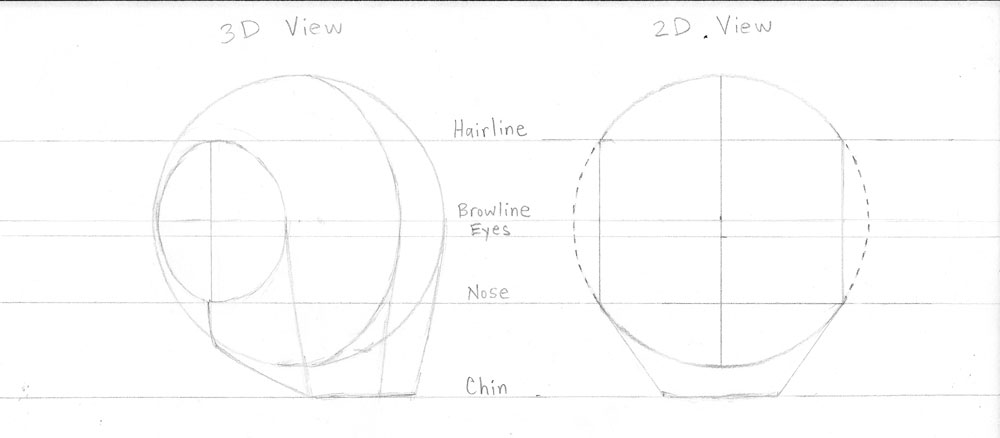
You can use this knowledge to draw a frontal view of a face with a two-dimensional circle instead of a sphere.
The top of the circle represents the hairline. The bottom of the circle gives us a guideline for the base of the nose. The middle line of the circle is a guideline for the browline.
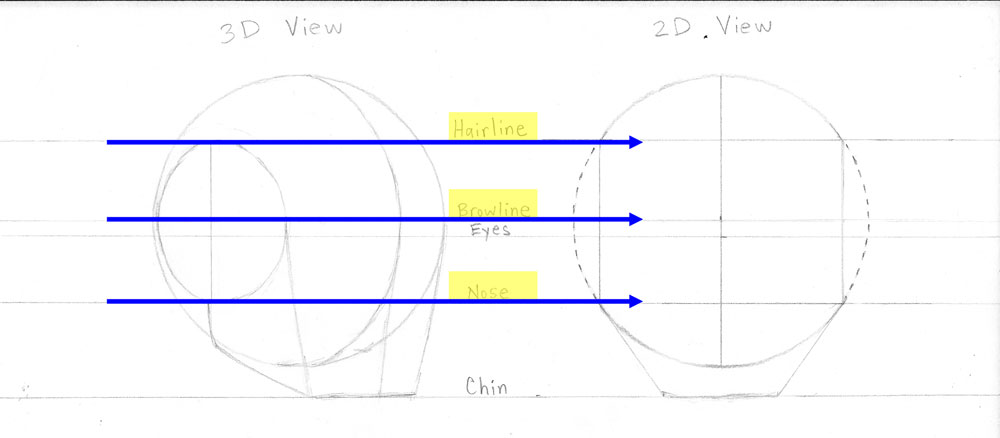
Notice how the length between the hairline and browline is equal to the distance between the browline and the noseline. You can use this distance as a unit of measurement from the nose to identify the proper placement of the chin.
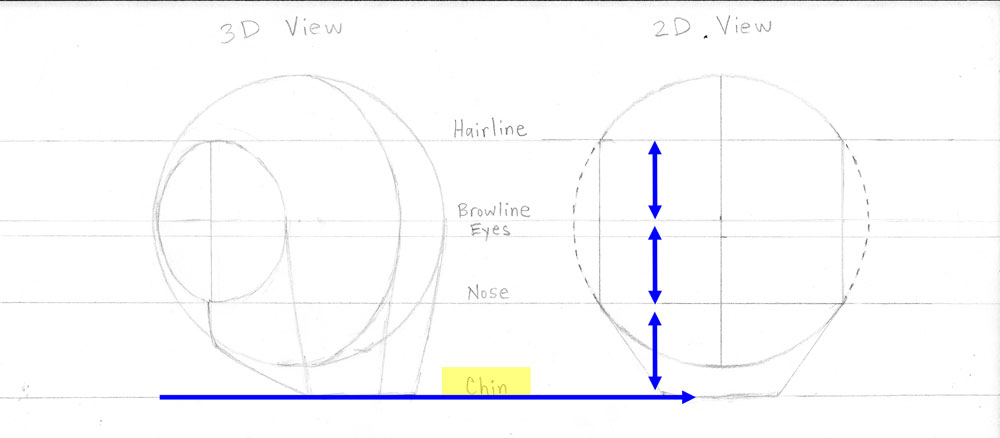
You can draw an additional horizontal line centered between the top of the head and the chin. This line should fall just below the browline. You can use this line as a guideline for the eyes.
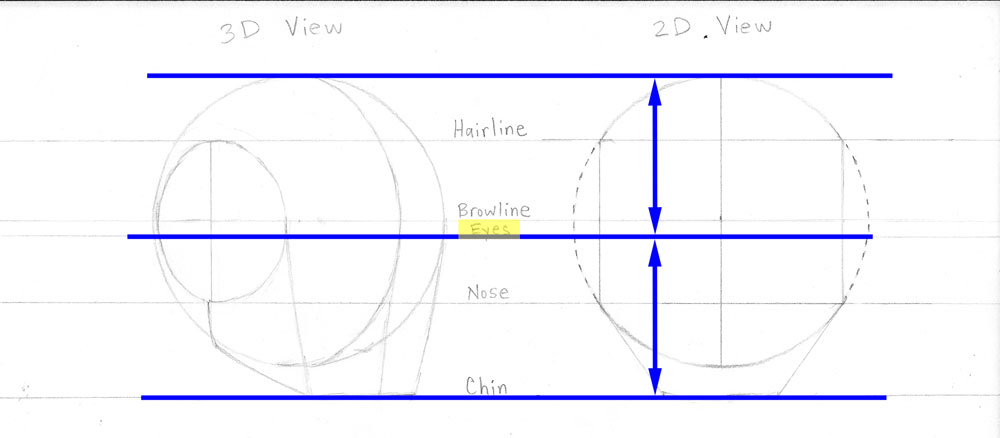
The Loomis method gives us a strong foundation upon which to draw a face. Still, there are other guidelines to consider that I will go over in the section below about facial features. When you are ready to draw the face and head in different positions, the Loomis method can be helpful with that too.
Differences Between Drawing Male and Female Faces
If you are wondering whether or not there is a vastly different process between drawing men and drawing women, the answer is … not really. The basic guidelines that you set up for drawing a face like I just outlined will remain the same regardless. Most of the differences you will notice between drawing a woman and drawing a man lie in the facial features.
For example, women tend to have thinner eyebrows that are slightly higher, and men tend to have bushier eyebrows that are slightly lower.
You would probably give more attention to the eyelashes in the drawing of a woman than you would a man.
In general, you would draw a man’s jawline and facial features a little more angular and possibly include facial hair. You would draw the jawline and facial features of a woman a little more rounded.
Drawing the Eyes
The eyes are placed approximately halfway between the top of the head and the bottom of the chin. If you divide the face into five vertical sections of equal width, the width of the eyes would be equal to the second and fourth section.

When drawing the eyes, remember that the pupil is a dark hole that should be shaded a very dark value. Draw the iris with light lines radiating from the pupil to the outer edge. Make sure you allow for highlights that overlap parts of the pupil and iris. The white of the eye should not be completely white. This is because there are usually light shadows that the eyelids cast onto it. Eyelashes should be drawn as curved lines that look like they naturally grow from the eyelids. Similarly, eyebrows should be pencil strokes that resemble hair and should be drawn in the direction of hair growth.
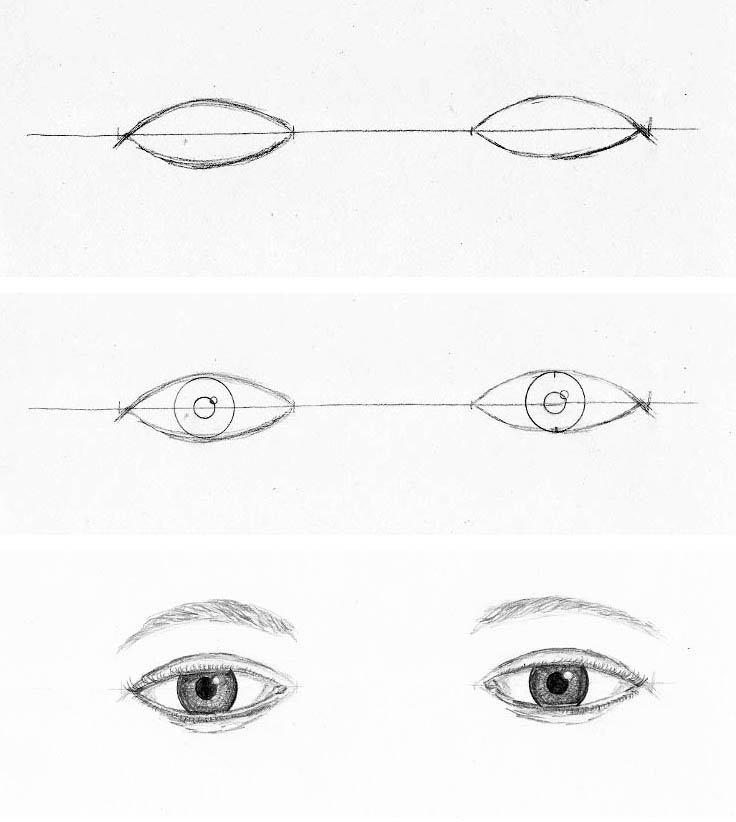
Drawing the Nose
The outer edges of the base of the nose generally aligns with the inner corners of the eyes.
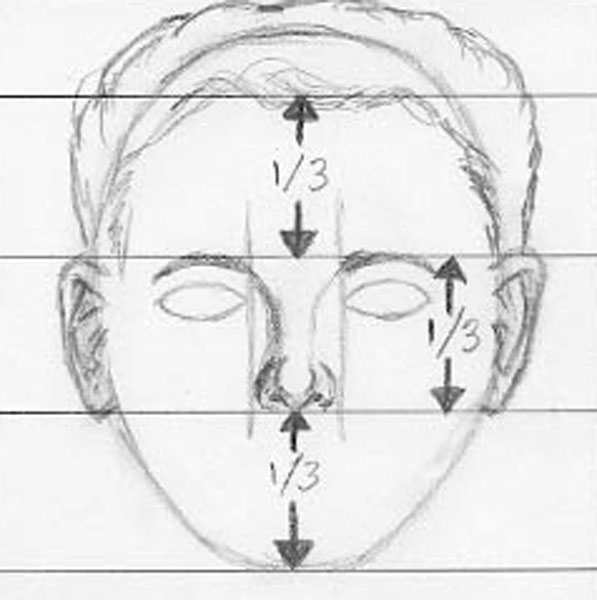
When drawing a nose, you can get started with a straight vertical guideline for the bridge. You can use a triangle for the bottom part. From there, you can use circles to shape the tip and nostrils. You can refrain from drawing a harsh outline for the bridge for a front-view drawing of the face. Make sure you shade the nostrils nice and dark. Look for highlights on the tip of the nose and along the bridge.
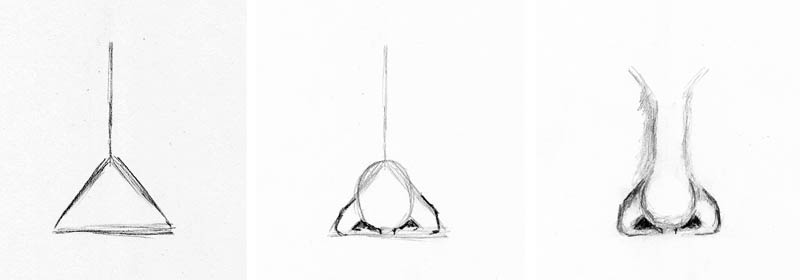
Drawing the Mouth
The mouth is approximately one-third of the way down between the bottom of the nose and the base of the chin. The corners of the mouth should align with the center of each eye.

As with every facial feature, look for characteristics of the mouth that are unique to the individual you are drawing. In general, the top lip of a mouth has a little dip along the top and bottom edge. The bottom lip is usually thicker than the top and has more highlights.
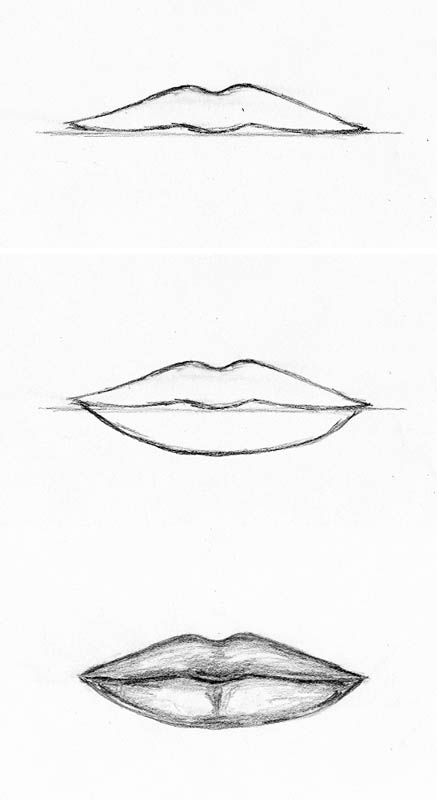
Teeth are very unique to each person and contribute greatly to the likeness of a person. Study the shape of the teeth carefully and replicate the shapes and placement as closely as possible. Often, you can get better results from using a grid to draw teeth accurately as opposed to drawing them freehand.
Drawing the Ears
The top of the ears are aligned with the browline. The base of the ears are aligned with the base of the nose. In a profile view, the ear is positioned in the center of the head.

Although each ear is shaped differently, all ears have the same basic structure. Study the curves and twists of the outer ear and practice drawing them repeatedly. Like with anything, drawing ears becomes much easier with practice.
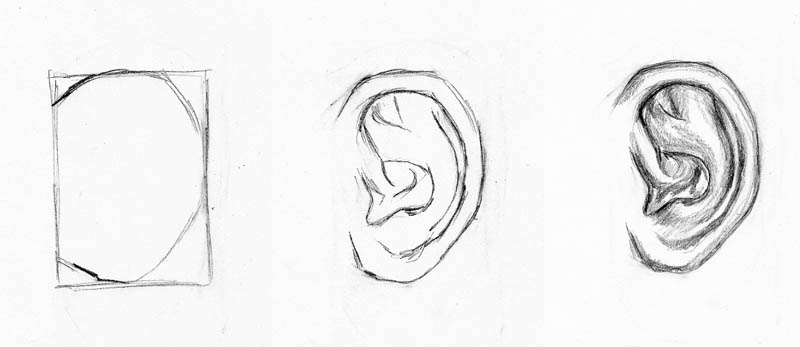
Drawing Hair
The guideline we sketched earlier for the hairline serves as a basic starting point. People have hairlines that may be slightly above or below this guideline. For someone with a full head of hair, you will have to draw the top of the hair higher than the top of the head.
When you draw hair, make sure to draw the strands in the general direction of hair growth. It is not necessary to draw every single strand. Instead, group sections of hair together as you draw and work on building up layers of light and dark tones.
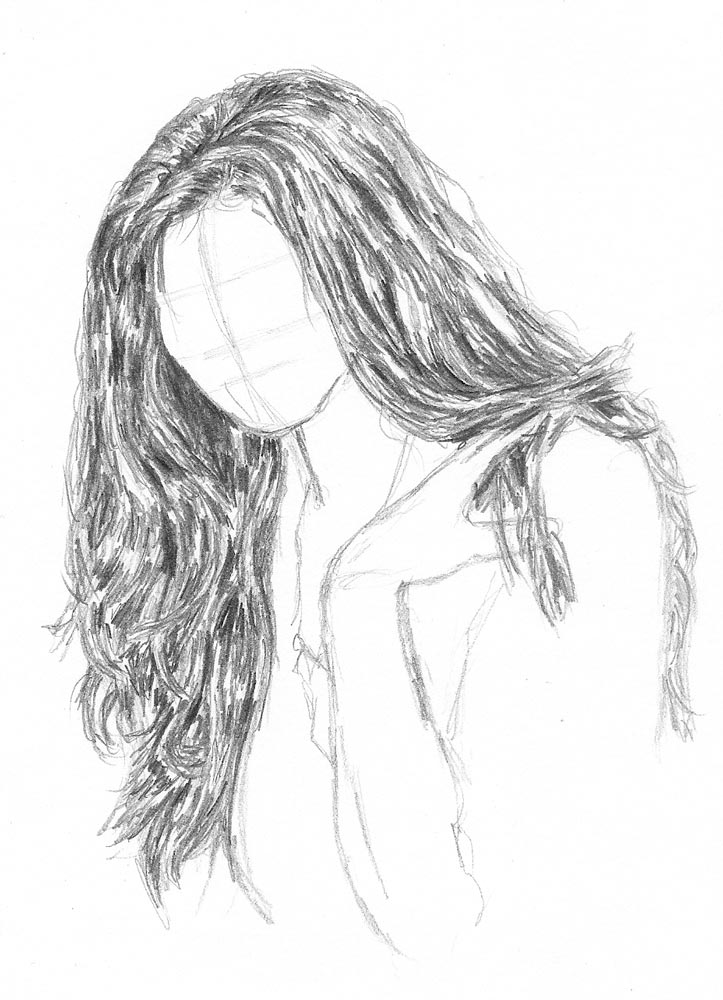
Every Face is Different
All of the ideas presented here are general guidelines. You must remember that each facial feature is unique from one person to the next. Also, the manner in which you draw these facial features will change based on the position of the face and expressions.
Drawing Faces Tutorials
Here are links to a few tutorials on how to draw facial features in a realistic manner.
Basics of Drawing People’s Bodies
Drawing people involves more than just drawing the face. Now let’s learn a little more about how to draw the human figure.
Many people who tell themselves they don’t know how to draw resort to the classic stick figure to draw a human body. Believe it or not, the stick figure does have its place when it comes to drawing the body. Just like when we used guidelines to draw the face, using a stick figure gives us a foundation upon which to build the rest of the drawing. Another option is to sketch basic round shapes instead of stick lines.
Regardless of which method you use, having knowledge of simplified body proportions is a must.
Simplified Proportions of a Human Body
To keep things simple, we will use the typical model of eight heads being equal to the height of a male. Please keep in mind that this model is from the Renaissance era. People in reality are more like around seven heads tall rather than eight. The eight-heads model is easier to explain and usually simpler for beginners to grasp. Just like I said before, this is meant as a guide, not a rule.
Here I have a piece of paper with lines marking off eight equal sections. The bottom of each section is marked 1-8.

- Notice that I have drawn an oval for the head with the chin resting at line 1.
- Now there’s a line from the chin down to line 3, where we find the belly button. Also, you can find the shoulders between lines 1 and 2.
- Next, the pelvis is between lines 3 and 4.
- Continuing downward, the bottom of the knees are found at line 6, and line 8 is the ground.
- As for the arms, the elbows are at line 3 with the belly button. The wrists are at line 4. The fingertips are halfway between the thighs at line 5.
- The upper legs go slightly inward from the hips to the knees.
- Use can use line 2 to place the nipples and help with placement of the chest.
A few extra details can help the body drawing to take a more recognizable appearance.
Other Factors to Consider When Drawing the Body
That was a quick overview of how to draw the body, which is helpful for sketching practice and building familiarity and comfort with figure drawing as a beginner.
As you build your confidence with drawing bodies, you will find that you will rely less on the eight-head framework and more on realistic representations.
There are many other things to consider. One factor is whether you are more interested in drawing clothed or unclothed figures.
If you wish to draw figures with little to no clothes, it would be helpful to learn more about anatomy. This way you can have knowledge of and better placement of muscles and visible bone structures. If you want to draw full-length portraits or character studies of people from everyday life, it would be beneficial to learn about clothing and the different types of folds found in fabrics. Whichever your preference, make sure you get lots of practice!
Drawing Figures Tutorial
Here is a tutorial for you to try that involves drawing the human figure.
Basics of Drawing People Doing Everyday Things
So far, we have learned how to draw the face and how to draw the body separately. What about drawing the face and body together in everyday situations?
At some point, you are going to want to draw more than just a face looking back at you. You will want to draw more than a body just standing there.
At some point, you will want to put life into your drawings. You will want your drawing to tell a story.
A great way to achieve this is by breaking out of your comfort zone and drawing people doing everyday activities.
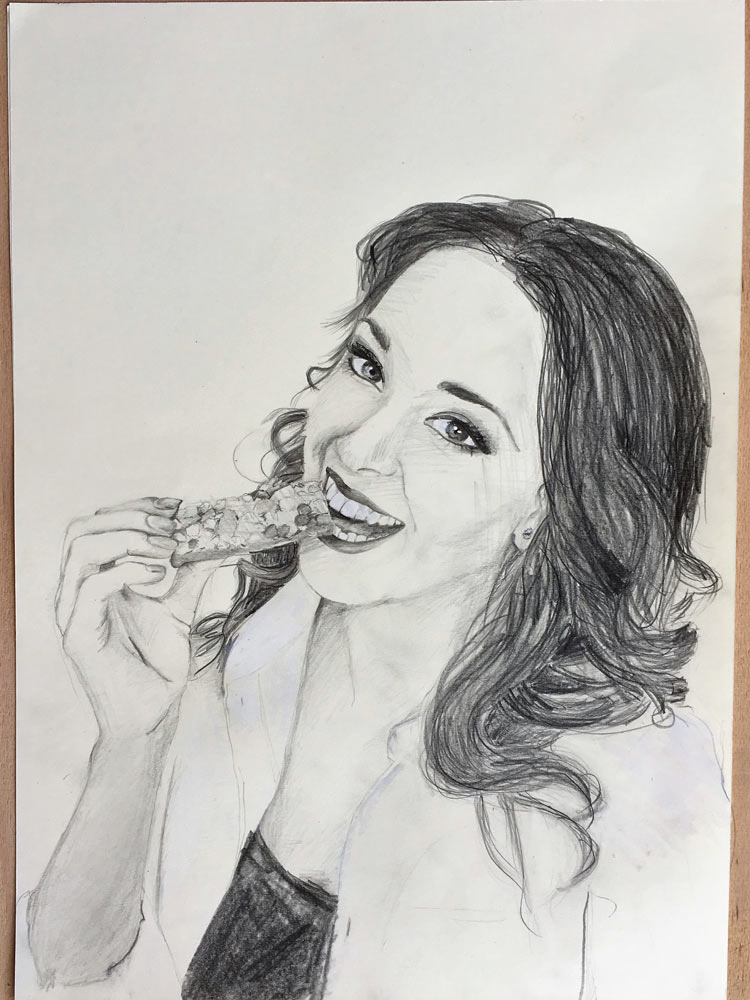
Loosen Up with Gesture Drawing
Gesture drawing is a fantastic way to get into the habit of drawing people in different positions. I think it’s a great method for beginners to transition into more realistic drawings of people in different poses as they are engaged in various pastimes.
Gesture drawing allows you to sharpen your powers of observation. It allows you to capture the form of people in different poses or while they are performing numerous actions. Gesture drawing is traditionally done using the help of a live model, but there’s nothing wrong with using photographs instead.
The idea is to sketch a person holding a pose for no more than 5 minutes. Try to capture as much of the pose as you can with a loose sketch of the form. You are not allowed to erase, and you should not expect perfection from your final result. You should, however, learn from each session.
If you make a habit of doing it for a few minutes each day, gesture drawing can do wonders to build your confidence with drawing people doing things you witness every day in the outside world.
Going Beyond Gesture Drawing
You can use some of the same principles of gesture drawing and expand upon them to draw people doing everyday things.
The way you can do this is to disregard the time limit from gesture drawing, but keep the elements of observing and drawing basic shapes to get you started. Then, you can build on those basic shapes with more details and even shading to create a more realistic drawing.
Think back to earlier in this post when we learned about stick figures and basic shapes.
You can begin by sketching a stick figure performing a particular action. Then, you can sketch over those stick lines with basic shapes to represent the limbs and other parts of the body. After that, you can add details to better define and transform the basic shapes into what they are meant to represent. Finally, you have the option to add shading and finishing touches.
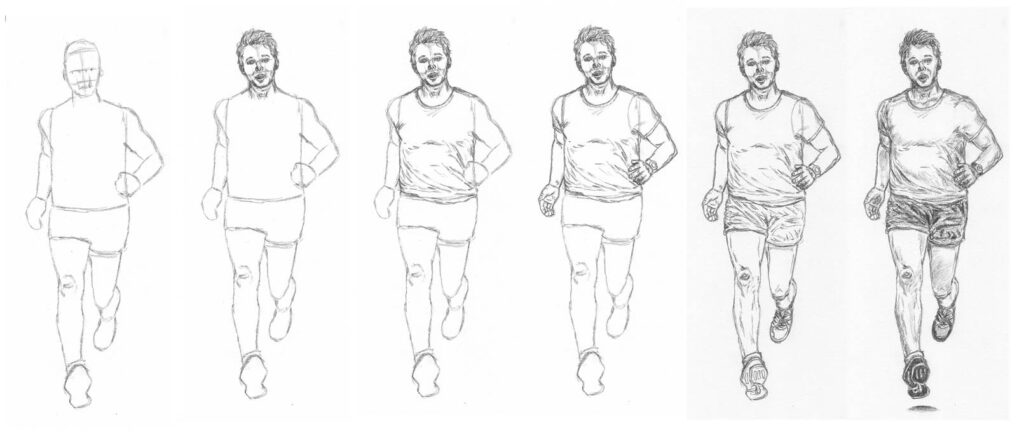
Starting from a stick figure is just one way to tackle drawings of people that include the head and body. As you practice more and more, you drawings will become more accurate and realistic even if you are just observing your reference. To achieve even more realism, consider using other techniques that ensure more accurate proportions, such as using plot points or using a grid.
Drawing Tutorials of People Doing Things
Here are links to tutorials about people doing some very common activities.
Conclusion
People are my favorite drawing topics. Throughout the course of my life, the subjects of my drawings have centered around people far more often than any other drawing subjects.
Keep in mind that there are many styles, techniques, and approaches to drawing people. The more you practice, the more you will develop a style that is unique to you.
You may even discover that you stop calling yourself a beginner and you start calling yourself a portrait artist sooner than you realize!

